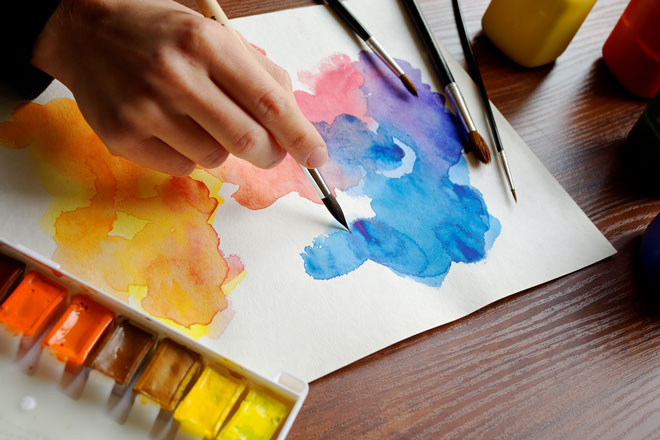Art Education
At one time, art education was taught to apprentices in an artist's studio. However, since World War II, more emphasis has been placed on obtaining a Bachelor of Fine Arts or Master of Fine Arts degree in order to pursue art professionally. A degree is necessary to teach at a public school. Art schools and colleges provide a comprehensive education for the artist, and they award art degrees. Graduation from these schools can lead to fulfilling art careers in various areas of interest. Many watercolor artists, however, are self-taught and further their technique by enrolling in watercolor classes and workshops or taking private instruction from a well-known artist. Instructional videos, CDs, and online courses are also useful to further their education.
For the student, art education promotes interest in other cultures, times, and places. It crosses genders, ages, and races, and raises awareness of others. Art is also used as education for people with special needs and provides therapy for them.
Many watercolor artists pursue art and continued learning for their own enjoyment, perhaps after retirement. For them, art is a leisure activity and a stress reliever; watercolor painting is not their main profession. But, through continuing practice, their education goes on; and they pass their knowledge on to the next generation of students.

